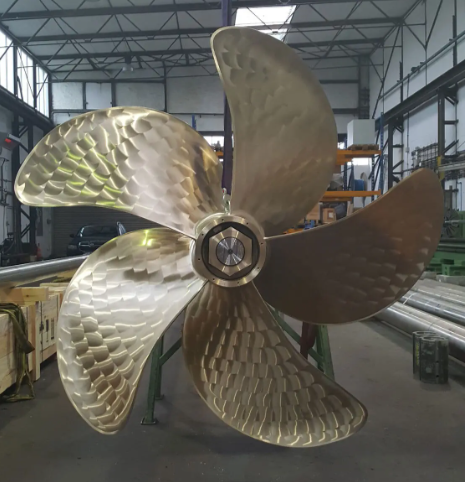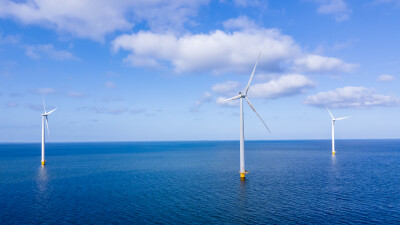For the average trawler or scalloper, putting a nozzle around the propeller has been standard operating procedure for decades. According to Jan Hass, propeller designer at Schaffran Propeller in Lübeck, Germany, it makes sense. “The nozzle itself, working with the propeller, will produce thrust at lower speeds,” says Hass. It provides an advantage in terms of bollard pull when you are towing something, for example.”
But Hass notes that a nozzle will certainly slow a vessel down at higher speeds. Schaffran Propeller's skewed propellers offer a compromise in terms of fixed propellers. “You have to find the right propeller for your engine and gear and match that with what you are going to be doing. But you have to look at your primary purpose: Do you need speed or towing power?”
When New Bedford scallop fleet owner Dan Eilertsen opted for a Schaffran USA skewed propeller for his new boat, the Vigilance, he broke from the norm. It was the second boat he had fitted with a skewed propeller, and as with the first, he gained efficiency at higher speeds while retaining sufficient towing power.
“Yes, towing at low speeds, you could still have enough power,” says Hass. “The designer would have to make those calculations. The point of the skewed propeller is basically if you have something in front of the propeller, like the keel. The water behind the keel is moving slower.” As Hass describes it, they skew the propeller so that the outer edge and the rest of the propeller that is in faster water all grab the water at the same time as the smaller radius part behind the keel. “The more even inflow reduces vibration,” says Hass.
Hass notes that Schaffran makes its propellers using nickel, aluminum, and bronze alloys. “We could use stainless steel, but it’s much more complicated and expensive,” he says. The nickel aluminum bronze behaves better in the casting. It’s very seawater resistant and good for repairing.”
While some propellers are made with coatings, such as Teflon, Hass recommends a polished propeller. “With a coated propeller, they may have a tendency to sing, and if some of the coating is chipped away, there may be galvanic corrosion in that spot. Of course, it’s a philosophy. Many people even like a certain roughness or special coating on their propeller. They think it provides an advantage. But we think a smooth surface is best.”
Hass notes that a skewed propeller can be a good choice if a vessel is designed with a good match between the engine, gear, and propeller. “A fixed propeller can cope with two operations if you balance it right,” he says, noting the compromises made between speed and pulling power. “But for more than that we would recommend a CPP (controllable pitch propeller). It’s a little more expensive, but it’s always better to have a controllable pitch that can be adapted to various operating points.”
While the mechanics of a CPP can be complicated, Hass notes that Schaffran uses a proven low-pressure hydraulic control in its controllable pitch propellers. “It’s less wear and low-maintenance,” he says. "It has advantages on the operating side.”
Schaffran Propeller is not a single-source power train provider. “We do everything from the gear back,” says Hass. “The shaft, struts, bearings, propeller, everything.”

The Schaffran Propeller website notes that all products are designed to match the requested classification rules, e.g., ABS, BV, DNV, LRS, RINA, and that a classification survey can be conducted on demand and the matching classification approval certificate can be delivered.
“We are happy to consult you in the course of your project planning and to answer your questions and give you an economically viable quotation,” the website adds.







